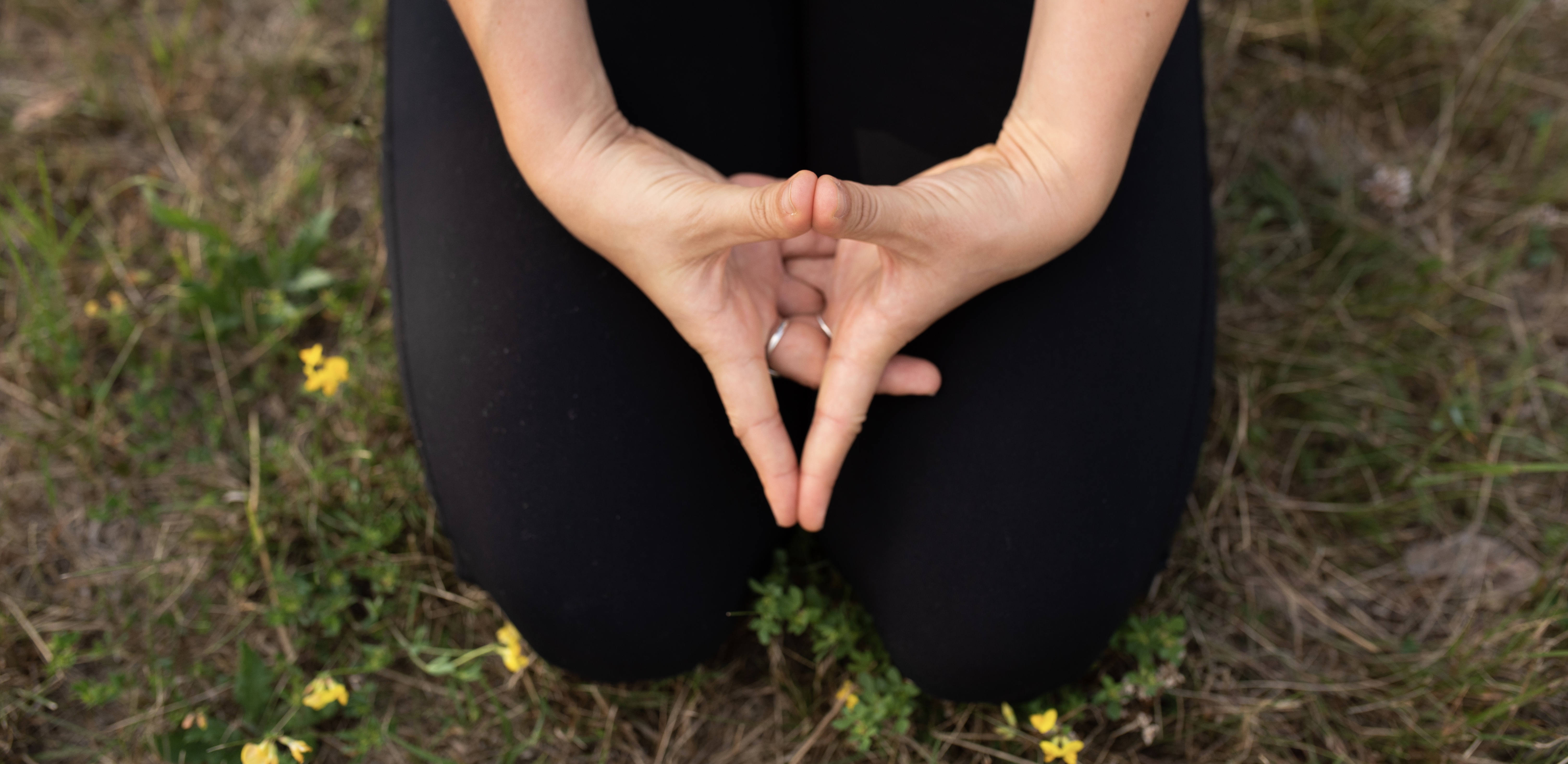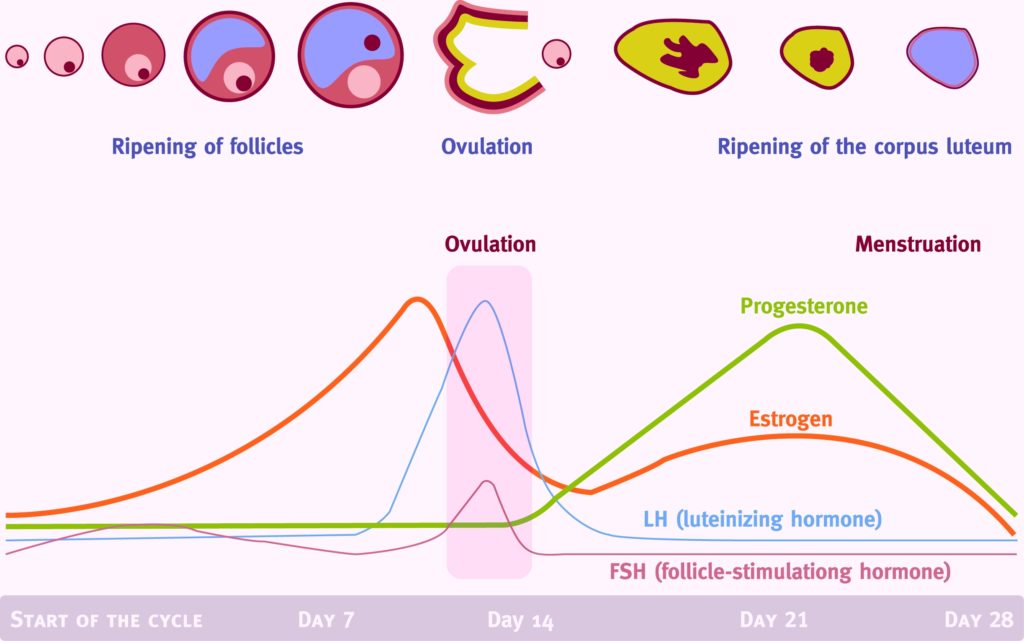Understanding your cycle and hormones 101

I was a teenager sitting in my high school classroom and I remember we were supposed to talk about the biology of reproductive organs. There was a penis and vagina picture in the textbook. The embarrassed teacher described the diagrams and we laughed. That is all I remember. And that is all my education on what is “down there” I received. It was only after I turned thirty when I slowly started learning details about how my body and cycle work. I realized there is much more beyond period and ovulation that creates our cycles and I also discovered all the misconceptions I had about how my body works.
Understanding our periods goes well beyond knowing when to put a tampon in our bag and avoid wearing white pants. Periods and our whole menstrual cycles are key to understanding our health. Our cycle is intricately connected to the cyclical nature of the production of female hormones, which manage and regulate a plethora of body functions. Thanks to our cycles we receive a monthly “scorecard” on which our body demonstrates our state of health. The in/balance of hormones during the cycle has a direct impact on our wellbeing as well as physical and mental health. The concept of the period being the “fifth vital sign” is now recognized in the medical field. As blood pressure indicates possible issues with our cardiovascular system, the quality, timeliness or problems in our monthly cycle indicate underlying problems in our endocrine, reproductive, skeletal or digestive systems and allow us to take preventive and early corrective actions, which do not allow these issues to develop in diseases.
When we talk about the female cycle, it is not only the time when we

First part of the Follicular phase: Menstruation
The first day of bleeding is the first day of our cycle. In most women the bleeding lasts between 3 and 7 days.
The menstruation occurs when the egg released during the previous cycle’s ovulation has not been fertilized and didn’t nest in the uterus. The uterus has been preparing for possible pregnancy and “cushioning” it’s lining (endometrium) for accommodating the egg, but now it’s time to shed this lining and start over. The uterus supports this cleaning process of the tissue by contractions, which in some people can cause cramps and pain. While we have our period, the follicles and eggs in our ovaries keep developing in preparation for the next ovulation.
During this time your body has the lowest level of the reproductive hormones (estrogen and progesterone). Interestingly, out of all the phases, during the menstruation, the levels of hormones in women are most similar to men.
Accept and support yourself during this phase:
Your body needs a lot of energy and the theme of this phase is letting go., it is the winter of your cycle, time of shedding. Spend time doing gentle exercise and take a lot of rest. Cravings might indicate a lack of certain nutrients in the body. Try to prevent cravings getting out of hand with feeding yourself well with good fats, proteins and healthy carbohydrates such as root vegetables. You need extra minerals during this phase to balance the loss of minerals during the menstruation, especially iron and zinc. And don’t forget to have some fresh orange juice with your dose of iron, as it improves the
Starting from day 5 to 7 of the cycle one dominant follicle (Graafian follicle) continues to develop and mature with the assistance of follicle-stimulating hormone (FHS) until the ovulation when FSH peaks. As the follicle is growing in size (up to 3 cm just before ovulation), it also produces more estrogen. When estrogen reaches peak level around day 12, it signals to the brain to increase the luteinizing hormone, which allows the egg to completely mature and the follicle membrane to become thinner. The increasing estrogen during this phase also allows the uterus lining to thicken and prepare for a possible pregnancy.
Fertility window: During the follicular phase, approximately 5 days before the ovulation, the women’s fertility window starts, and becoming pregnant is possible. The misconception that a woman can get pregnant any day of the cycle is false. Also, it is not true that you can get pregnant only on the day of the ovulation. Sperm can live inside of our body up to 5 days. Therefore the Fertility window can take 5- 7 days.
Accept and support yourself during this phase:
Together with your hormones your energy also rises. It is the time of new beginnings, the spring of your cycle. Think of creative ideas, new projects, new friendships. Explore new exercises and find joy in your growing vitality. Your plate should also look joyful, fresh fruits and vegetables of all colors, don’t forget to load on leafy greens, healthy fats including oils and seeds, and fermented foods, which will help you really support your best self in this phase.
Ovulation
Ovulation occurs when the follicle ruptures as a result of spiking luteinizing hormone and releases the mature egg from the ovary. Immediately after the egg is released it starts its journey down the fallopian tube to the uterus. Woman’s fertility peaks during the ovulation as the egg can be fertilized for the following 24 hours. In most women, ovulation takes place between 10-17th day of the cycle. With the release of the egg, the eggs follicle turns into a tiny yet powerful gland – corpus luteum – producing progesterone. Progesterone is responsible for maintaining the uterine lining and ensuring that the potentially fertilized egg has enough time to nest in the uterus. Progesterone also raises body temperature by approximately 0,5 – 1 degree, increasing the metabolism, apet
Accept and support yourself during this phase: You are a star. In this phase, you have it all. It is the summer of your cycle. The high level of estrogen makes you feel and look amazing. You feel sexy, desired and your confidence doesn’t quiver. This is the time to go out, socialize, talk to people, organize important meetings, presentations or negotiations. This is the time, when your energy is on its peak and you can capitalize on it either at work, at home or at the gym. During this time it is very important to include enough fiber and pre-biotics in your diet. As your estrogen peaks, it also needs to be processed and removed safely through your digestive tract. Don’t remove stalks from your leafy greens, cool your potatoes to create resistant starch and eat some legumes to feed your microbiome.
Luteal phase
This phase usually takes between 10-14 days after the ovulation. At the beginning of the luteal phase, the lute
After about 10 days of producing progesterone, if the egg has not been
If the egg has been fertilized a new hormone HCG starts being produced. It takes over the role of the luteinizing hormone and it continues to stimulate the corpus luteum to keeps growing, producing progesterone and maintaining the endometrium in the uterus.
If the luteal phase is shorter than 10 days, it might be a sign of low levels of progesterone, which is responsible for maintaining the uterine lining and it might also lead to problems with fertility as the egg doesn’t have enough time to nest.
Due to high levels of progesterone, the body temperature spiked after ovulation remains higher until menstruation. Interestingly due to high progesterone in the luteal phase, apart from raised body temperature, your heartbeat and breathing rate also increase.
Accept and support yourself during this phase:
ight after the ovulation, you are still riding the peak of your high hormone levels, but as they start decreasing, you will find your energy lowering. Progesterone is a wonderful hormone, but as you see it rising, you might feel the need to slow down and relax. As in the autumn, the luteal phase is time for organizing, finalizing, cleaning up and bringing ongoing projects into completion. If you kept postponing organizing of your closet for the past weeks, during your luteal phase you will likely do it with pleasure. Equally organizing your finances or ticking off errands from the to-do list will bring you odd joy during this phase. With the menstruation slowly approaching some cravings might appear. Calcium and magnesium are especially critical in this phase. Leafy greens, beetroot, carrots, potatoes
Irregular cycles
While the average cycle takes 28 or 29 days, many women experience longer or shorter cycles. The healthy variety is between 21-35 days and other lengths can indicate more serious hormonal issues.
It is important to know that the presence of menstruation doesn’t mean that the ovulation has occurred – this is known as an anovulatory cycle. This causes low levels of progesterone in the second part of the cycle. One clue of the anovulatory cycle could be a very light period. But why is ovulation so important? Out of the multitude of the reasons is that the anovulatory cycle results in low levels of both estrogen and progesterone and loss of bone density. A study found out that women experiencing anovulatory cycles for 1 year, were losing 4% of their spinal bone!!!
The key to understanding irregular and anovulatory cycle lies in understanding the hierarchy of hormones. While LH, FSH, estrogen
If you are on the pill
Please be aware that the above description of the menstrual cycle and hormone production accompanying it is only true for women, who do not use hormonal contraception. If you use the pill, the hormones prevent the ovulation from happening (even with the progesterone minipill, the ovulation does not occur, if the pill is taken timely). I would not like to discourage anyone from using the pill and it is important to recognize its role in women’s empowerment. However there is a growing amount of evidence and scientific studies, which link its usage with a variety of negative health consequences for women and its use over years and decades should not be taken lightly. Especially worrying is the proven relationship between usage of hormonal contraception in early age and lack of development of bone density, which is correlated with high risk or osteoporosis and proneness to bone fractures in later years.
